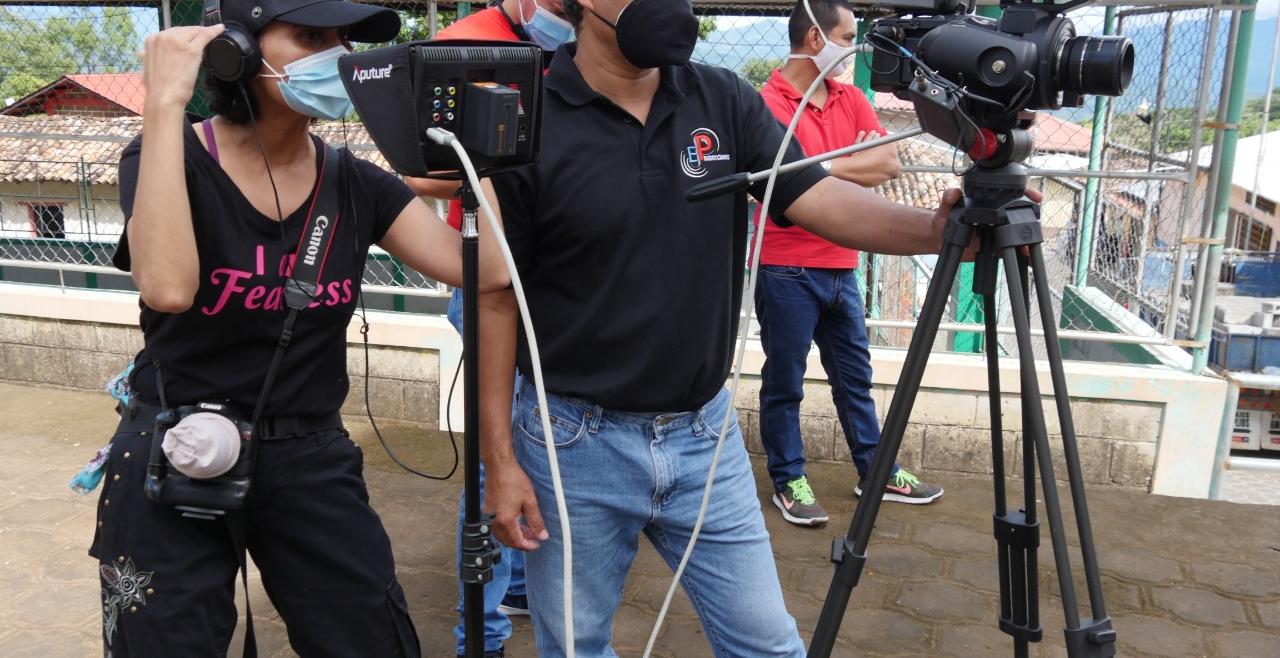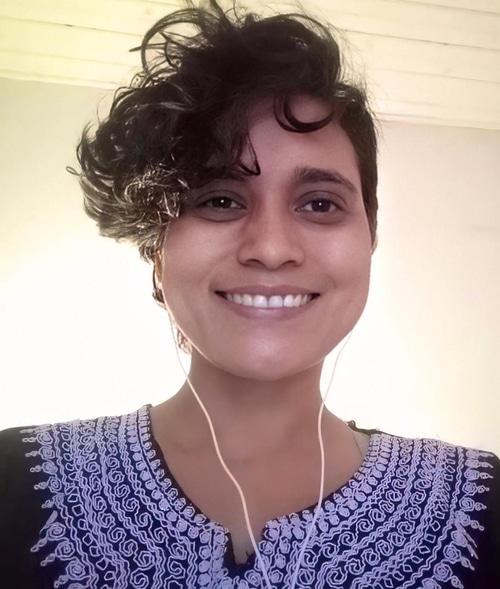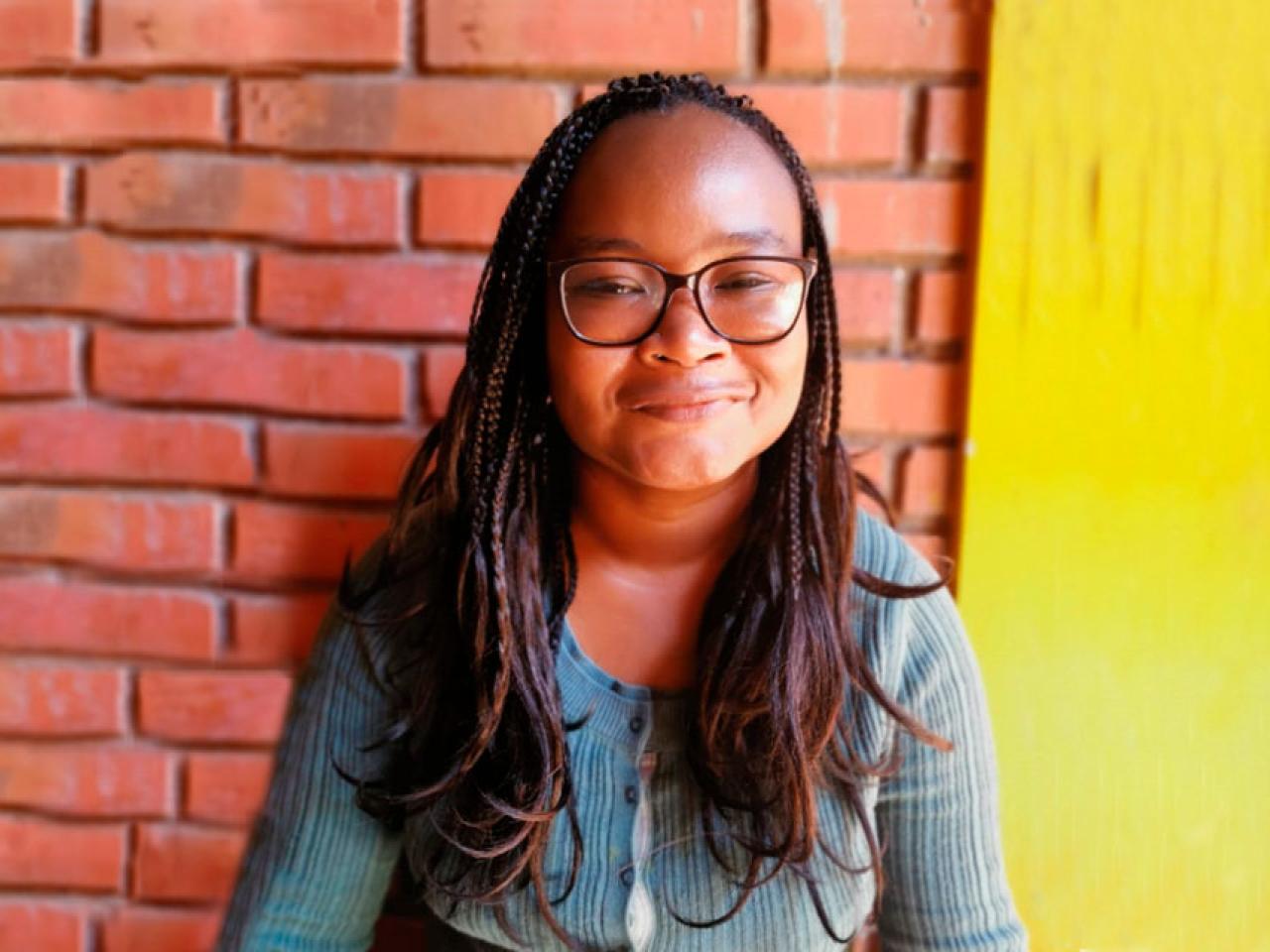Indigenous filmmakers are shining a light on violence against women and girls in Honduras

TEGUCIGALPA, Honduras — In Honduras, the Spotlight Initiative is working with the Honduran Filmmakers Collective to showcase the work of female filmmakers as part of its efforts to address and prevent violence against women and girls. With a focus on intersectionality and empowerment, these films aim to raise awareness of gender-based violence and prompt discussion of the issue through art.
Below, indigenous filmmaker Karla Díaz speaks about her film ‘Cadenas’ (Chains), her experience in the film industry and how she is using her platform to speak about the discrimination and violence indigenous women often face.
Watch the film above
Why did you decide to make a film about indigenous women and the violence they experience?
I decided to make a film about the violence experienced by indigenous women because I find violence against women alarming, whether they’re indigenous or not. In Honduras, the majority of people suffer from inequality, insecurity and violence, but it’s especially prevalent for women… Indigenous women suffer from the violence of the system in all its magnitude: gender-based violence, sexual violence, social violence, economic and therefore political violence, the loss of our ancestral customs and knowledge.
Can you share some of the challenges that indigenous women face in the film industry and in Honduran society?
During my childhood, people often commented on my skin colour. I have also experienced this within the film industry. Because I lack a "formal" education and have brown skin, the opportunities are scarce. Talent doesn’t suffice — you must also have a lighter complexion. Women with indigenous traits are only given [acting] roles as domestic servants or ignorant women. Moreover, to be able to assist in production, I had to work twice as hard to prove that I could manage [the job] without a computer or a car.
Have you experienced any of these challenges personally?
Yes, many times, but I’ll share one experience in particular.
I was working on a film and a month before the premiere, I was attacked by someone from one of the sponsoring companies. At the time I didn't know it was a physical, sexual assault. The executive production team immediately asked me not to report, saying that it was counterproductive for the premiere. I was on tour without someone to care about my physical, mental and emotional wellbeing. I was confused and hid [what had happened] from my family to keep them from worrying. A month later, a video of the assault was made public and my daughter — who knew nothing — was greeted by her classmates showing her what had happened. I received calls from the media and had to self-isolate. The production team appeared at my house, even though they had never come to pick me up throughout the entire experience. They had prepared a press conference. They told me I was going to be famous and that ticket sales were soaring. I refused and told them that if one day I became well known it would be for my job and not as an object of show.
"Indigenous women suffer from the violence of the system in all its magnitude." - Karla Díaz, Director
Do you think indigenous women need more visibility in films and media? Why is representation important?
Yes, absolutely, in movies and in the media. By being represented, we could have more objectivity in movies and in news. Misogyny is prevalent in how news about violence against women is presented. It’s vital that we educate ourselves on gender issues to weaken this sexist system.
How does art help change values and behaviours?
Interacting with and creating art has been a spiritual experience. I believe that art can contribute a lot; we can increase awareness and share valuable information.
The film pays homage to human rights defender and environmentalist Margarita Murillo. Can you explain what she represents to you?
Margarita was abused in every possible way, as was I and many Honduran women. With a very basic education, she helped with literacy training for people, and empowered herself and others. Her fight grew so large that she began to be persecuted, but she never gave up and ended up being vilely murdered [because of her activism]. That's why her story echoes with me. She led by example. As she says, “they will not break us!”
"I believe that art can contribute a lot; we can increase awareness and share valuable information." - Karla Díaz, Director
You explore the relationship between violence against indigenous women and violence against the environment. Can you explain this link?
Defending the environment is not only about the environment itself. It involves our territorial struggles and our ancestral customs, since in our worldview the earth does not belong to us, we belong to it. Taking away the lands that ancestrally belonged to us takes away our right to a dignified life, to food, to the knowledge that has been passed down from generation to generation.
This interview has been edited for length and clarity. Translation by Maria Belen Iturralde


